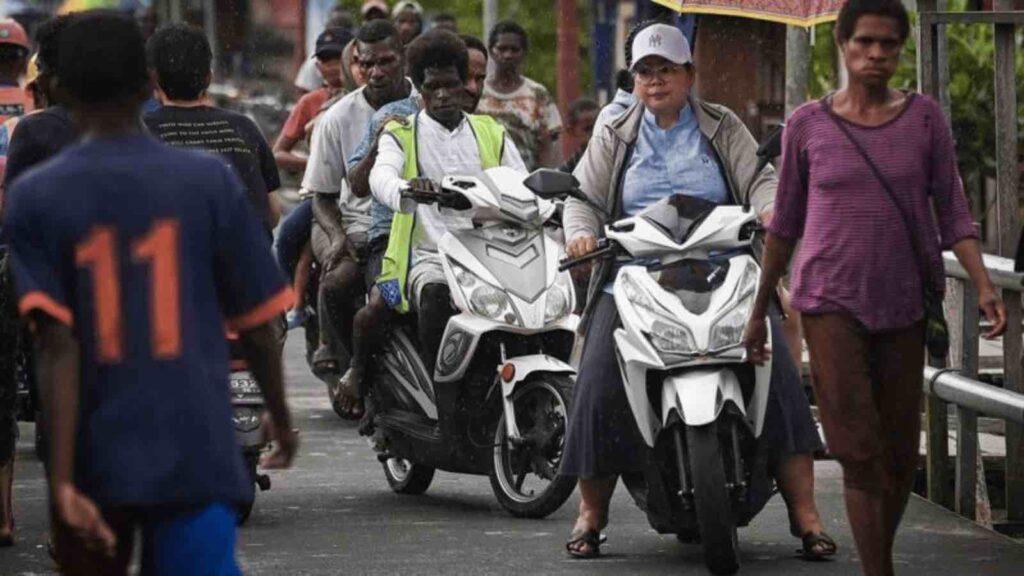A green revolution: how Asmat, Indonesia pioneered 99% electric transportation amid infrastructure challenges
While much of the world was still contemplating the adoption of electric vehicles (EVs), Asmat, a remote region in South Papua, Indonesia, was already making a significant stride towards green transportation. Agats, the capital city of the Asmat district, embraced electric motorcycles as the primary mode of transport as early as 2007.
RELEVANT SUSTAINABLE GOALS



A GREEN REVOLUTION AMID INFRASTRUCTURE CHALLENGES
Before the arrival of electric motorcycles, walking was the primary mode of mobility for the inhabitants of this 701.99 square kilometer area, home to 15,841 residents as of the latest 2020 data. Given the region’s marshy geography, riddled with numerous rivers, some locals also resorted to motorboats for transportation.
The transformation began in 2006 when Erna Sabuddin, a migrant from South Sulawesi, introduced the first electric motorcycle to Agats. The lightweight and eco-friendly transport appealed to Yuvensius Alfonsius Biakai, the regent of Asmat from 2005 to 2015. Recognizing the benefits of these electric vehicles, Yuvensius requested another unit to serve as his official transport.
Yuvensius saw a perfect match between the electric motorcycles and Agats’ wooden boardwalk roads that span over marshlands. The lightness of the vehicles, in contrast to conventional fuel-based motorcycles, made them an ideal choice for the locals, who struggled with access to fuel due to their remote location.
Starting from 2007, electric motorcycles began to dominate the transport scene in Agats. Demand from the public continued to grow, attracting a variety of electric motorcycle manufacturers to penetrate the Agats market.
Fast forward to today, an astonishing 99% of vehicles in Agats are electric motorcycles, according to local government data. Despite the lack of a public Electric Vehicle Charging Station (EVCS), residents charge their vehicles at home, keeping the electric transport trend alive and thriving.
The experience of Asmat district serves as an exemplar of how dedication and creativity can overcome geographical and infrastructural challenges, paving the way for a more sustainable future. It’s a powerful reminder that the shift to renewable energy and greener transportation is not only possible but also achievable, regardless of where we are located.
Lead image courtesy of ANTARA FOTO / ADITYA PRADANA PUTRA.



